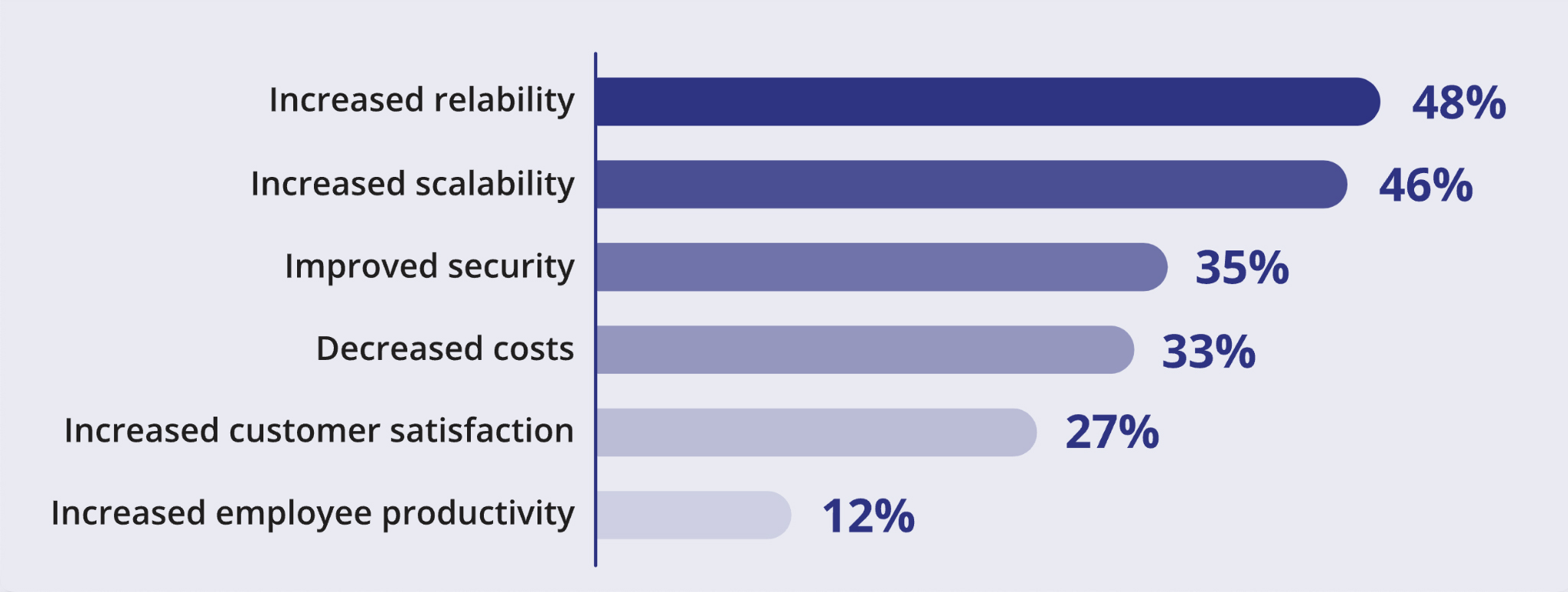App Modernization
Solutions
Unlocking your business acceleration
App modernization is the process of updating an existing application. It can involve a wide range of changes, from updating the user interface to incorporating modern technologies and security measures. The goal of app modernization is to improve the performance and functionality of the application – making it more user-friendly, efficient, and secure. All this while supporting the longevity of your business in this ever-changing market demand and operational needs.
Application Modernization: A Future – Proofing Strategy
Future-proofing your business means staying relevant in an incredibly competitive digital age. Therefore, investing in app modernization is a must, and equally, finding the right legacy modernization services partner is key to reducing the cost and complexity of maintaining your outdated applications.
This strategic business decision will surely help ensure that your systems can adapt and grow as their business needs evolve. Furthermore, it will empower you to take advantage of modern technologies and emerging trends, such as cloud computing, mobile devices, and artificial intelligence, to drive innovation and stay ahead in a fast-changing market.


Source: Kenveyor.io: Increasing scalability and reliability trump cost reductions

Benefits of Legacy Application Modernization
These are several compelling reasons why modernizing legacy applications is necessary for businesses that want to remain competitive and relevant in the digital landscape.
First, according to Forrester’s study, app modernization resulted in a 40% increase in productivity. Improving the functionality of your business’ legacy applications makes your systems more user-friendly, more efficient, and reduces errors that hinder productivity overall.
Second, updating your applications can increase the security and compliance of your business. Protecting against cyber threats and ensuring that your systems meet industry standards is necessary. It is especially important, as cyber-attacks are becoming increasingly sophisticated and damaging to the reputation of your business.
Third, it can enhance the scalability and flexibility of your business’s applications, enabling them to grow and adapt to changing business needs. This is crucial in a rapidly changing market where innovative technologies and trends are constantly emerging.
Finally, a recent McKinsey study of enterprises found that legacy systems account for 74% of IT spending. If cost reduction, eliminating the complexity of maintaining legacy applications, and freeing up resources for other strategic initiatives is a top priority. Then, the benefits of legacy application modernization can help to improve your business’s bottom line and allow you to focus on driving innovation and growth instead.
5 Steps to App Modernization
The steps can vary depending on the specific needs and goals of a business, but the application modernization solutions process involves the following steps:
1. Assessment: Assess the current state of the business’s applications, including their functionality, performance, security, and compliance. This can help to identify any gaps or weaknesses in the current system and provide a baseline for planning and implementing the modernization effort.
2. Planning: Develop a comprehensive plan for modernizing the business’s applications. This should outline the specific goals of the modernization effort and the strategies, tools, and resources needed to achieve them.
3. Implementation: The next step is to implement the changes and updates needed to modernize the business’s applications. This may involve updating or replacing existing applications, integrating new technologies and tools, and training staff in using the newly upgraded systems.
5. Deployment and support: The last step in the modernization process is to deploy and provide ongoing support to ensure that they continue to function properly and meet the business’s needs. This may involve providing technical support and training to users and monitoring and maintaining the modernized applications to ensure continued performance and effectiveness.
Key Takeaway
Overall, app modernization and finding the right partner to map out the path are important processes to consider unlocking and accelerating business growth. It will also provide the best possible experience for your market and employees alike. By incorporating the latest modern technologies, you can be sure to stay ahead of the competition and achieve your goal to succeed in this cut-throat digital world with application modernization solutions.
Do you have legacy systems and or applications that need modernization? Think AI is always on the lookout for thought leaders like you to partner with and solve complex business. Get started on accelerating your business success today. Let us connect.



